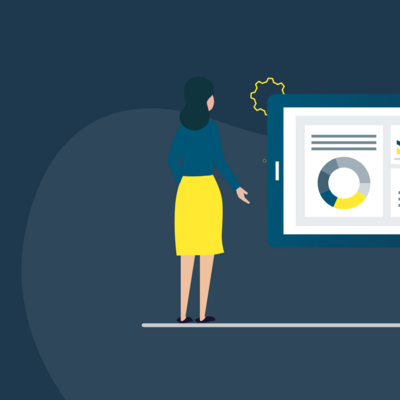The tool formerly known as Google Data Studio is a great tool for presenting well-filtered website data. It doesn't just simply string data together, but can also be displayed in various charts. Depending on the structure, the dashboard reveals all kinds of interesting facts about the origin of the website visitors, the top pages and also the pages with the most bounces. A special advantage of the Looker Studio: it can be branded in the company colors and operated interactively.
Changes at Looker Studio
The new Google Analytics 4, which will replace the current Google Analytics in the summer, will also bring changes to Looker Studio - and unfortunately they are not very good.
Because now medium to large reports no longer load all widgets in the dashboard and display an error message instead. So if you use a report with a relatively large amount of data, you will also be affected by the change.
What is the reason for the incorrect reports in Looker Studio?
In early November, Looker Studio Team announced that Looker would be limited by GA4's API quotas.
You can see which GA4 API quotes this affects here.
What exactly are quotes/tokens?
Tokens are a unit of measure used by Google Analytics 4 to measure requests to the Google server. Tokens are consumed every time users open the dashboard for the first time, as well as every time a filter is changed or a time adjustment is made.
You can think of it like a credit balance. And every time you open the report in Looker Studio or adjust the date range, something is deducted from this credit. However, as there is only a small amount of credit available from the start, some details will soon no longer be displayed.
How can the problem be explained?
The two highlighted lines are decisive for the errors.
Main tokens per project, property and hour
Firstly, the tokens for the requests have been reduced, so significantly fewer tokens can be used per hour.
Concurrent requests per property
On the other hand, only 10 requests can run in parallel. This means that if a dashboard has more than 10 elements, only 10 elements are loaded and all others display an error. Even if there are still enough free tokens.
Furthermore, more complex queries with many filters and events, for example, will consume significantly more tokens than with simply aggregated data.
Conclusion: The free use of Data Studio is significantly reduced in terms of functionality. Unfortunately, there is no simple solution for this innovation.
What options does Looker Studio offer together with Google Analytics 4?
Reduce the complexity of dashboards/reports
- Less than 10 elements on one overview
- Send automatic PDF reports for users so that not every single person consumes the quotas to simply look at the data
Partner connectors
Looker Studio offers many partner connectors. Some of them try to counteract this change by caching the data, but are usually subject to a fee. And: The restrictions could remain in place depending on the complexity.
Google's Extract Data Connector
This connector can extract the data aggregated and free of charge from GA4 and store it in a Google cache. From there, the data can be used. As this connector pulls the data once and then keeps it, you can set the data to be pulled daily in the morning. This means that the data is available throughout the day. Unfortunately, you cannot pull the data several times a day, it is only possible once a day.
Note: In most cases, it will be necessary to create a separate connection for each element in the dashboard, as the data cannot be easily transformed between the elements depending on the filter/grouping settings.
Google Sheets
There is currently no official connector for GA4 from Google. It may be possible to use external connectors to retrieve and temporarily store the data on a daily basis. The disadvantage here is the aggregation of the data and the limited number of cells in Google Sheets.
BigQuery
BiqQuery is a good alternative, as the data transfer from GA4 to Big Query is provided free of charge. The data is then in a raw format and therefore offers the same freedom of analysis as GA4.
Disadvantage: There are additional costs for using Google Cloud. If the queries are done well and the reports are of medium difficulty, you can expect costs of around €50-100 per month. All other variants would cost more money. In addition, a digital/data analyst is needed who can operate the Google Cloud and prepare the data from Big Query correctly and economically.
OUR CONCLUSION
For small free reports, we recommend the Google Extract Data Connector for simple ungrouped queries. The GA4 Connector could still be used for ClientID/User-based queries. However, the number of pure GA4 elements should be kept as low as possible.





